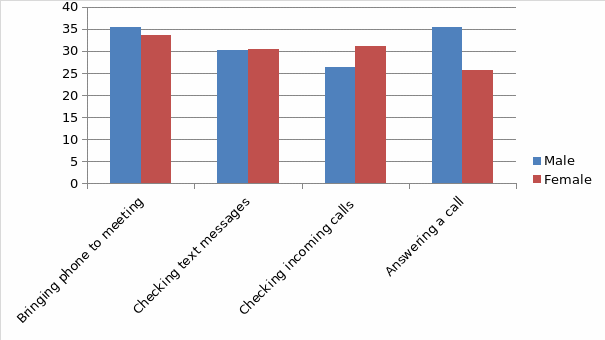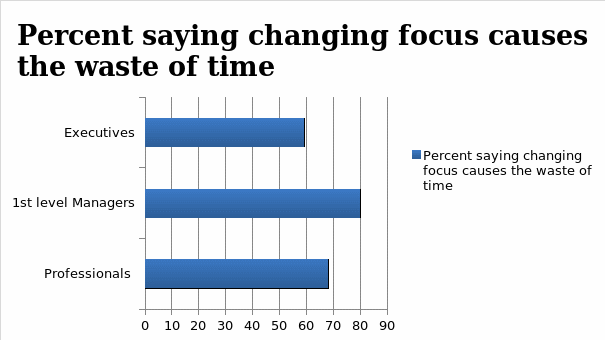Introduction
The pandemic has changed business communication on a global scale. The need to manage business meetings properly is now significantly challenged. There is no need to mention that poorly held meetings might weaken the company’s performance, let alone a negative effect on the team’s morale. While the real-life meetings held before the COVID-19 was exceptionally effective, the pandemic left its mark on the online sessions provided at the moment. Now, the meetings’ efficiency decreased, challenging its facilitators to engage new practices and rethink previously used ones. The following report is focused on the most useful practices for face-to-face conversations as well as for the virtual ones. The techniques for both types of sessions will be contemplated; the analysis of the possible difficulties the team may face will be provided.
Analysis of the Real-life Meetings Practices
The techniques used during face-to-face meetings are rather efficient and can be implemented during online conversations. First, sending agenda, the practice used by Mr. White, at least one week in advance, is highly recommended for the productive meeting. The file should state the goals of the upcoming conversation, contain the topic list of discussion, and a time frame for each of the topics; it also should seek feedback on the proposed agenda (Best practices for effective meetings, 2020). Then, the next successful one used by the chairman is reviewing the agenda and the goals at the beginning of the meeting. Such warming up allows the participants to concentrate fully on what is going to be discussed.
Another useful practice used by Mr. White was obviously the request to his colleague to warn him if the time allowed for an issue is over. While speaking, one may lose track of time, trying to regard all the details involved, even if their ability to manage time is high. Hence, having a colleague to help becomes an essential part of any time plan. Timing is of significant importance to both face-to-face and virtual meetings since the capacity to concentrate is limited.
Mr. White then implemented the next activity – he repeated the questions and commented on the members’. He also asked for the comments when one’s proposal is spoken. This practice involves the participants in the conversation and helps them to concentrate on the issue being discussed. Last but not least, is summarizing the agenda, reviewing the assignments, and setting the time frame for the next session (the one after the break, in this case).
Still, more practices may be engaged to boost the effectiveness of face-to-face meetings, involving them later in online conversations. One of such activities is heading the discussion straight to the point. In other words, one may shortly consider the issue, and then make the decision, build a plan, or identify the main barriers to success (Frisch & Greene, 2020). One may thus deliver constructive dialogue with the team members and increase productivity. The next related technique is designing the agenda in the way that the participants can engage early, having something to do straight away (Guidelines to conducting effective meetings, 2020). Appropriate meeting design and management may maintain one’s engagement on a high level.
Then, it may be of use to establish a meeting-free day. To ensure the team’s productivity, one may hold the session in a different manner or declare a day in which the meeting is not held. Some companies declare Fridays as such a day; others implement the “stand-ups” (Guidelines to conducting effective meetings, FML, 2020). While the first proposal is clear, the second needs to be clarified. The team members are standing up while working on the urgent agenda only. The issues to consider must include only those that have to be resolved at that point.
Research on the Difficulties of the Online Meetings
The challenge the pandemic imposes on business currently is the implementation of these techniques for effective and productive online conversations while at home. The researches show that using a phone during the meeting or even bringing it may cause a waste of time due to various distractions. According to Deal (2015), both male and female employees bring their phones to the session (p. 10-11). Often, they answer the incoming call, check the text messages, or time.

These small actions may seem nothing of a danger to the business; however, they lower the level of concentration on the current discussion and may cause misunderstanding of a particular aspect of the topic. Another difficulty in the business is the change of focus while conducting online sessions. The research shows that changing focus reduces efficiency and causes a waste of time (Deal, 2015). Most of the employees, regardless of their position, indicate the degradation of an ability to concentrate if the mobile activities are present.

Research on the Best Online Meetings Practices
Still, various practices may prevent distractions and provide a productive virtual conversation. First, each member should ensure their Internet connection and, if necessary, make it stable. Both video and audio capabilities and devices used should be tested before joining the conversation. Such tools as Skype, GoToMeeting, or Zoom may help to provide a high-quality conversation. Second, before the discussion of the topics, the facilitator should set clear objectives and, if necessary, send the agenda beforehand for the next meeting (Frisch & Greene, 2020). Third, the individual in charge of leading the session should set the ground rules so that everybody might stick to them, and the conversation was not lead in the wrong direction. Forth, it is essential to identify time frames for each of the topics and outlines the next steps after each and at the end of the meeting.
The fifth practice consists of minimizing the length of the presentation. An issue must be presented in the material sent to the participants in advance so that they already knew the topic. During the online session, the topic should be discussed, not presented (12 secrets to holding more productive business meetings, 2020). The next useful technique to run a meeting adequately may be calling on people. Providing everyone’s involvement while preventing small chats is a steep challenge. To avoid that, the facilitator may call on individuals to speak or comment on the issue. Some of the tools allow the attendees to “raise a hand.” Then, gathering real-time feedback may be of use, as well. Such means as Poll Everywhere may facilitate the collection of the on-demand feedback from attendees (Frisch & Greene, 2020). Finally, tackling difficult issues is essential – even if it seems a better solution to avoid serious issues when the real-life conversation takes place, it is not. Since the pandemic is due to no specific time, each item should be addressed while online.
Summary
Although the pandemic has drastically changed the way business communication is implemented, online meetings can still be delivered successfully. The basic practices, such as outlining the key points of the meetings, setting their goals, or sending the material for the participants to read in advance, can be used in both types of sessions. Therefore, the rules for running in a conversation are common for both face-to-face and online conversations and require the facilitator to dominate them. The virtual meetings require specific practices involving not only the chairman but also the team members to realize before joining. These activities include checking the Internet connection and fixing it, if necessary, or checking the video and audio capacities of a device. Here, the facilitator may engage in calling on people and gathering real-time feedback in order to boost their productivity.
Recommendations
The recommendations for Marcus White, Managing Director of Quartz Power Group (QPG), would be as following: to continue to deliver practices directed at maintaining focus and efficiency of the team members. These include commenting on their proposals, asking the others for the ideas, calling on the participants, or cooperating with the colleagues to manage time. Likewise, Mr. White should also continue framing the time allowed for every item, outlining the goals and rules of the meetings. Further, it is crucial to involve the practice of summarizing each topic discussed. The encouragement of the team for checking their Internet connection and device is obligatory, as well. The material necessary for the next meeting should be sent to the team member in one week before the session.
References
12 secrets to holding more productive business meetings. (n.d.) Business Development Bank of Canada (BDC). 2020. Web.
Best practices for effective meetings. (n.d.). The world wide web consortium (W3C). 2020. Web.
Deal, J. J. (2015). Always on, never done? Don’t blame the smartphone. Center for Creative Leadership (CCL). Web.
Frisch, B., & Greene, C. (2020). What it takes to run a great virtual meeting. Harvard Business Review. Web.
Guidelines to conducting effective meetings. (n.d.). Free management library (FML). 2020. Web.